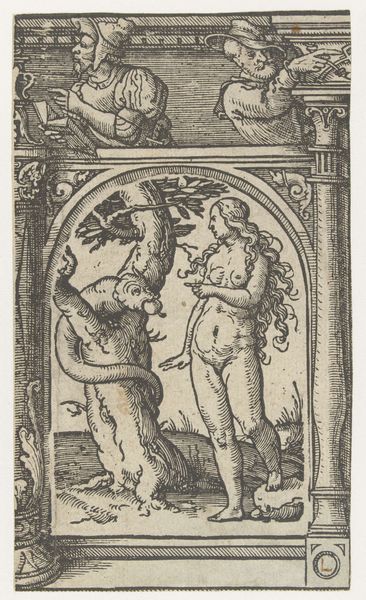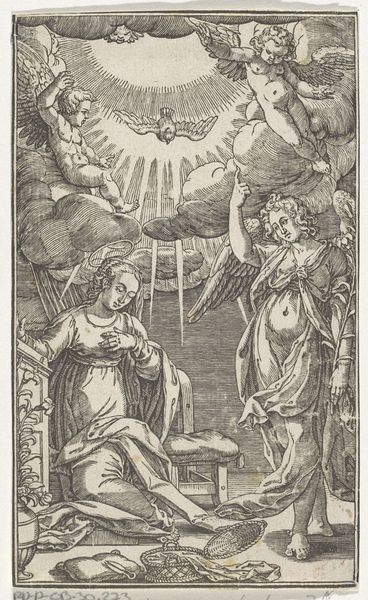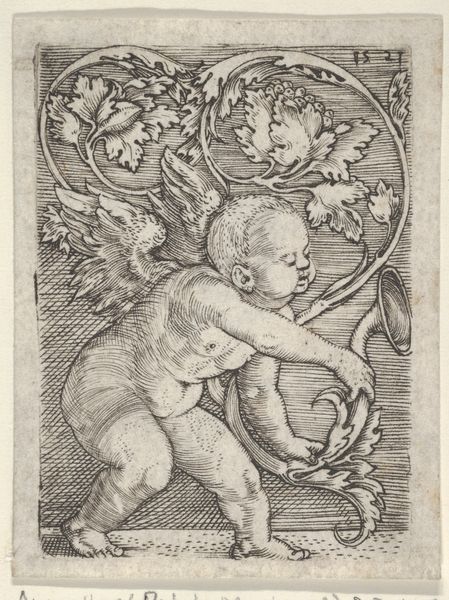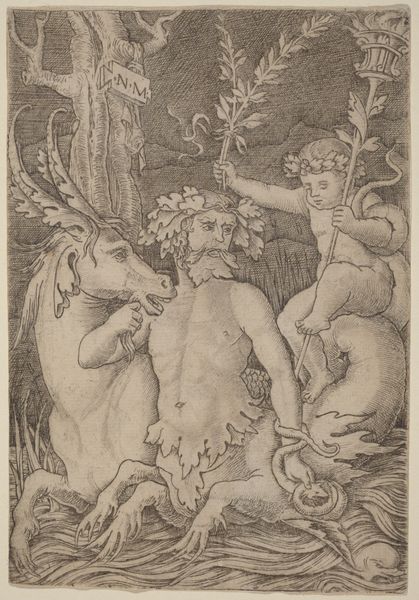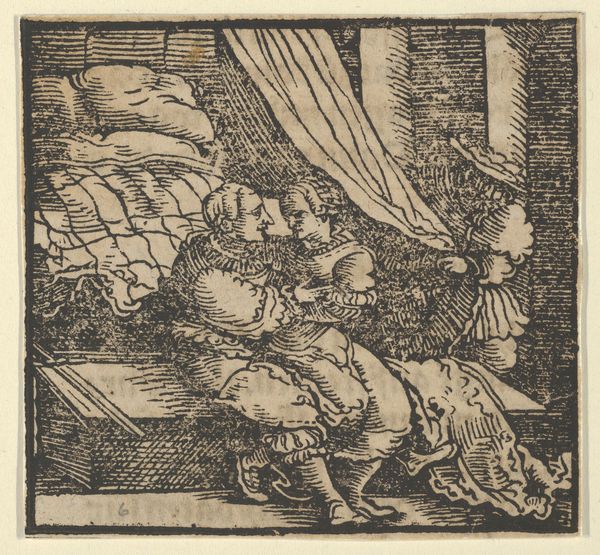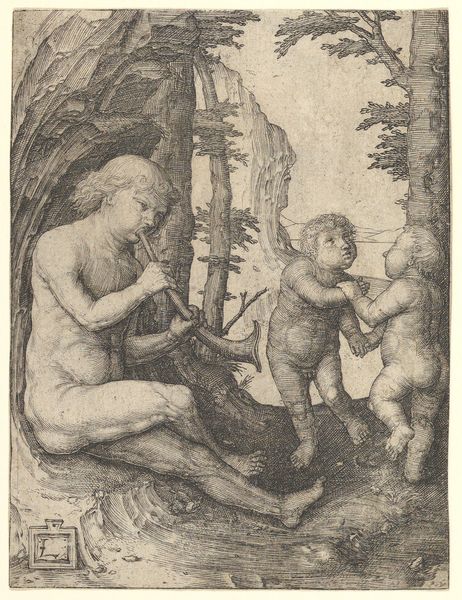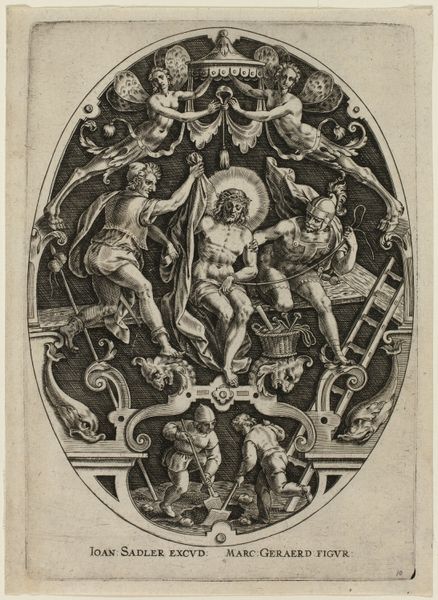
carving, print, engraving
#
carving
#
allegory
# print
#
figuration
#
line
#
northern-renaissance
#
engraving
Copyright: National Gallery of Art: CC0 1.0
In 1529, Heinrich Aldegrever crafted this engraving, a tableau rich with symbolism. Three cupids stand prominently, each grasping a staff, while above them, a bear rests. The cupids, figures of love and desire since antiquity, here take on a peculiar gravity, their cherubic innocence tempered by the serious task they seem to perform. Their staves, adorned with foliage, remind us of the ancient Roman thyrsus, associated with Bacchus, god of wine, ecstasy and theatre. The symbol suggests a connection between love and primal frenzy. The bear, often a symbol of strength and ferocity, may allude to the untamed aspects of human nature. Consider how these symbols resonate through time. Cupids, derived from the Greco-Roman tradition, appear throughout the Renaissance, often in connection with Venus. The bear appears in Northern Renaissance art, a reminder of humanity's primal instincts. These images tap into a reservoir of collective memory, engaging viewers on a subconscious level. Ultimately, the symbols in Aldegrever’s engraving, though rooted in the past, continue to evolve, their meanings shifting with each new interpretation.
Comments
No comments
Be the first to comment and join the conversation on the ultimate creative platform.

